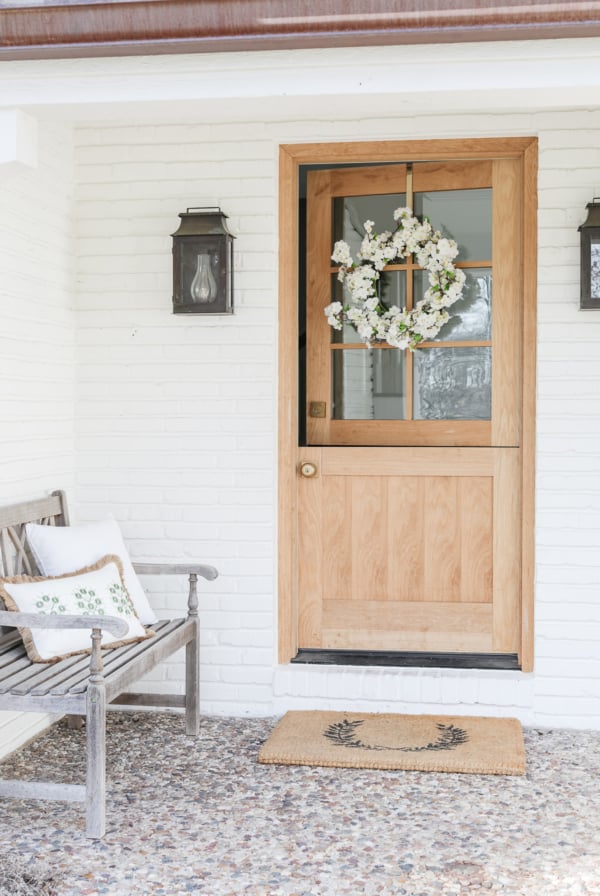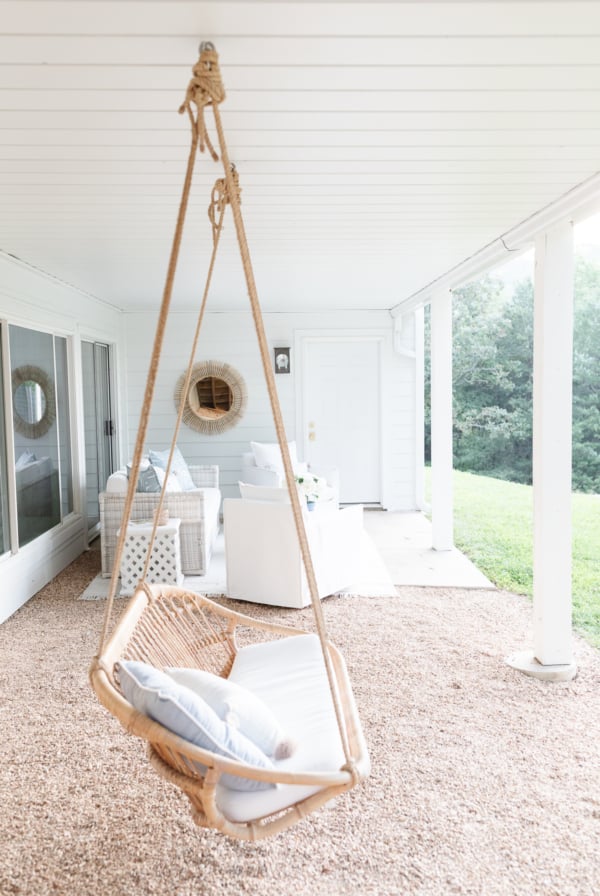It is so simple to incorporate French lavender (also called Lavandula Stoechas) into your garden or home decor. This plant is beautiful, easy to grow, hardy, and fragrant! Keep reading to see how you can add French countryside charm in your own yard!
If visions of purple blossoms serenely swaying in the wind bring you joy, then you need to plant French lavender. Growing it is really easy because of how adaptable it is to different climates, soil, and watering habits.
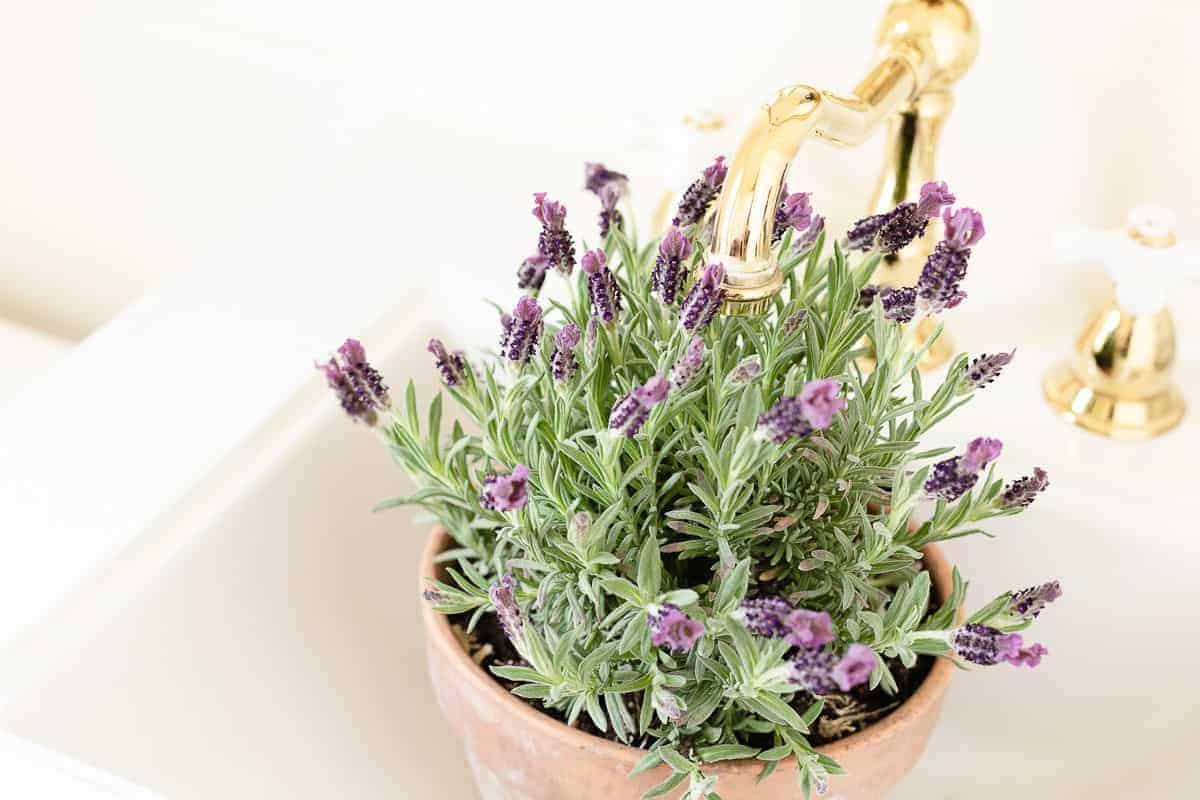
Lavender can be used in so many ways! It looks amazing in galvanized planters that can line your porch or walkway. I love my lavender tree, a topiary that creates a sweet, compact look. And lavender pots make beautiful gifts for friends, teachers, and for a party host.
Although lavender is traditionally an outdoor plant, it transitions well to an indoor plant. It is very resilient and forgiving, like my other easy house plants. They all make it easy to have a green thumb!
French lavender will soon become a favorite in your garden or home. And if you’re a French fanatic, check out this lovely French country decor. It is such a classic and timeless style.
Because my recent post on English lavender was helpful to so many of you, I thought it would be fun to focus on French lavender today! Let’s learn about the differences between the two.
Why You’ll Love French Lavender
- Unique and stunning flower shape
- Easy to grow and care for
- Can be grown indoor and outdoor
- Lovely fragrance and aromatherapy benefits
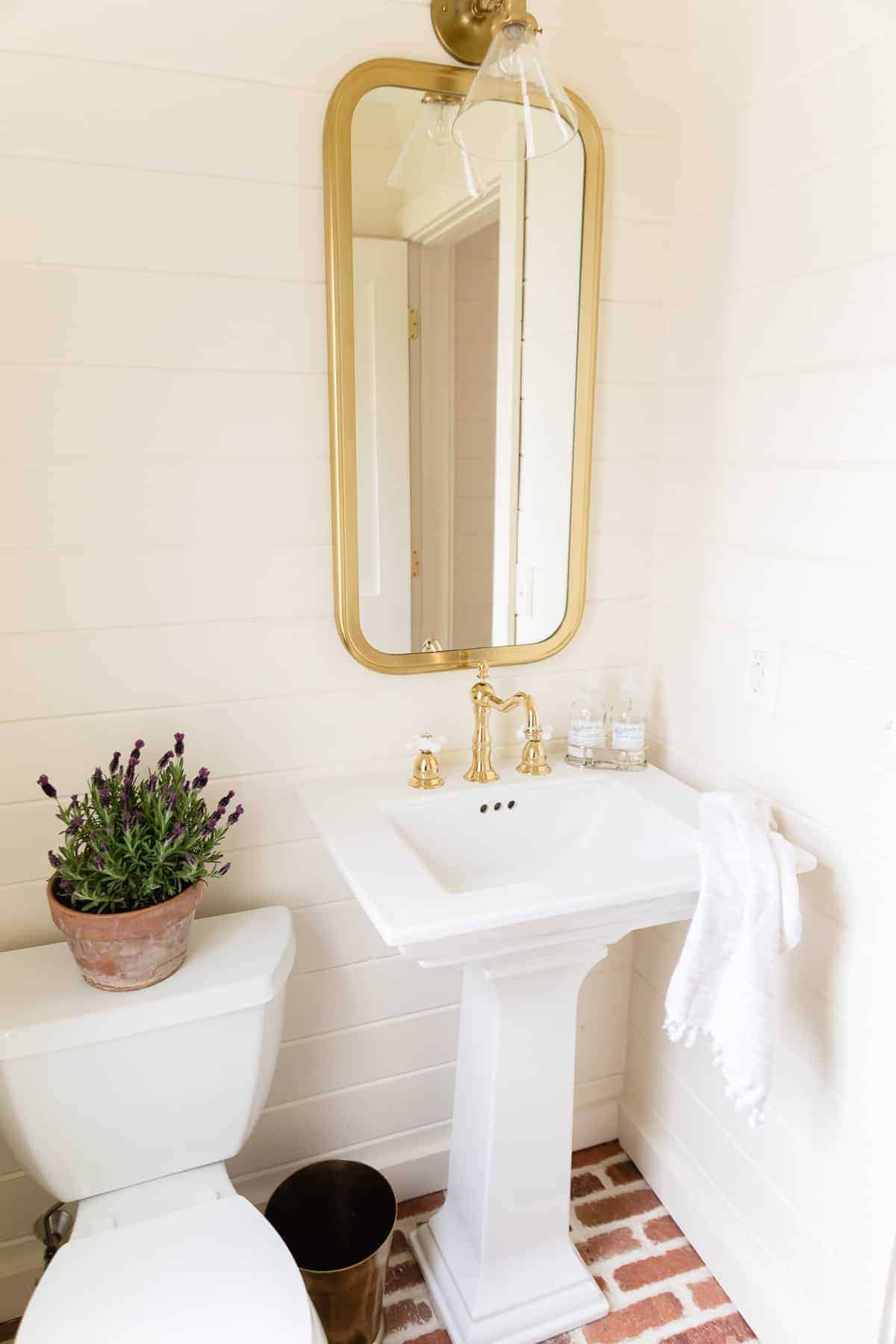
French Lavender/ Lavandula Stoechas
French lavender goes by the botanical name of Lavandula stoechas. It is one of the four main types of lavender, the others being Spanish lavender, English lavender, and hybrid lavender varieties.
Lavender plants are native to the Mediterranean region, including parts of Spain and France. It adapted well to the heat and less than ideal soil, producing beautiful foliage and flowers.
Purple blooms sit atop a thin stem that grows taller than the leaves of the shrub. French lavender’s flowers are unique because they look like compact pine cones with wispy petals blooming at the top. These wisps at the top have given Lavandula stoechas the nicknames of fringed lavender and butterfly lavender.
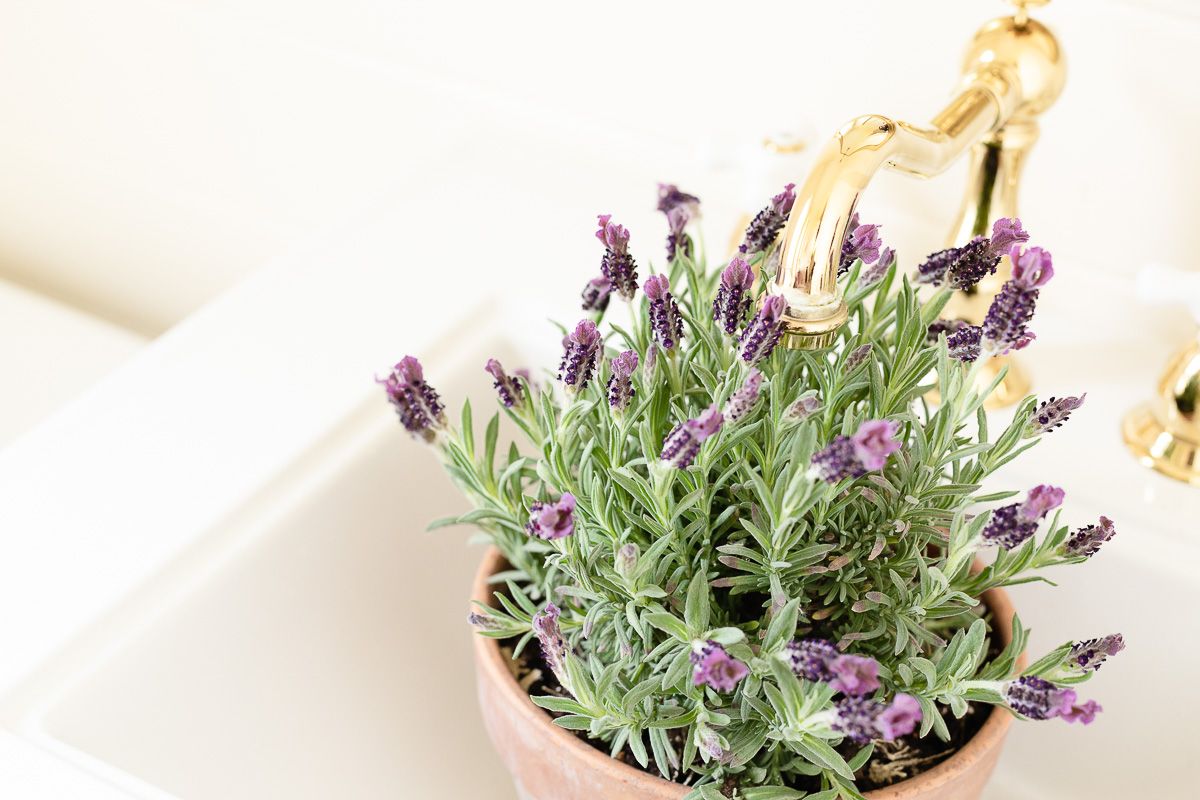
Differences Between French and English Lavender
Both French and English lavender varieties are amazing growers and will perform well for you, but they do have differences you’ll want to know.
- English lavender is more hardy than the French variety. French lavender will not survive cold winters. While English lavender is cold hardy to zone 5, French lavender will remain hardy only through zone 8 when planted outside.
- English lavender is more fragrant and is the most popular choice for perfumes and culinary purposes. French lavender still has a lovely fragrance and can be used for its scent and flavor, but isn’t used as much.
- In warm climates, French lavender can have flowers year-round, when cared for properly. English lavender can at most bloom twice.
- French lavender tends to grow larger than the English variety.
How to Grow Lavender
French lavender is extremely easy to grow and quite resilient, even in imperfect conditions. Whether you’re growing it indoors or outdoors, lavender will provide you with its lovely fragrance and beautiful blooms.
How to Grow Outdoors
To start, choose a spot in your garden with full sun and sandy soil that drains well. Place the lavender plant inside a hole that is about twice as wide as the root ball. Water thoroughly after first planting.
Plant in the spring for best results. Then let the sun and infrequent watering take care of the rest. Let the soil dry before watering again. You don’t really need to add fertilizer to the soil. Lavender is content and thrives in poor soil quality and bright sun.
Prune your lavender in the fall after the blooms have died. Cut the stems below the blossoms. This is also a good time to shape your plant. Yearly prunings will keep your plant strong and avoid turning leggy, which is unruly stems that are unattractive. This will also keep the base of your plant healthy instead of turning into wood.
If you live in a warm climate, your plant can grow outside year round. However, if you have cold winters, your French lavender could potentially die over the colder months. You may want to consider growing your lavender in a pot and then bringing it inside in the colder months.
Learn more about growing Lavender Trees like the ones pictured here, too!
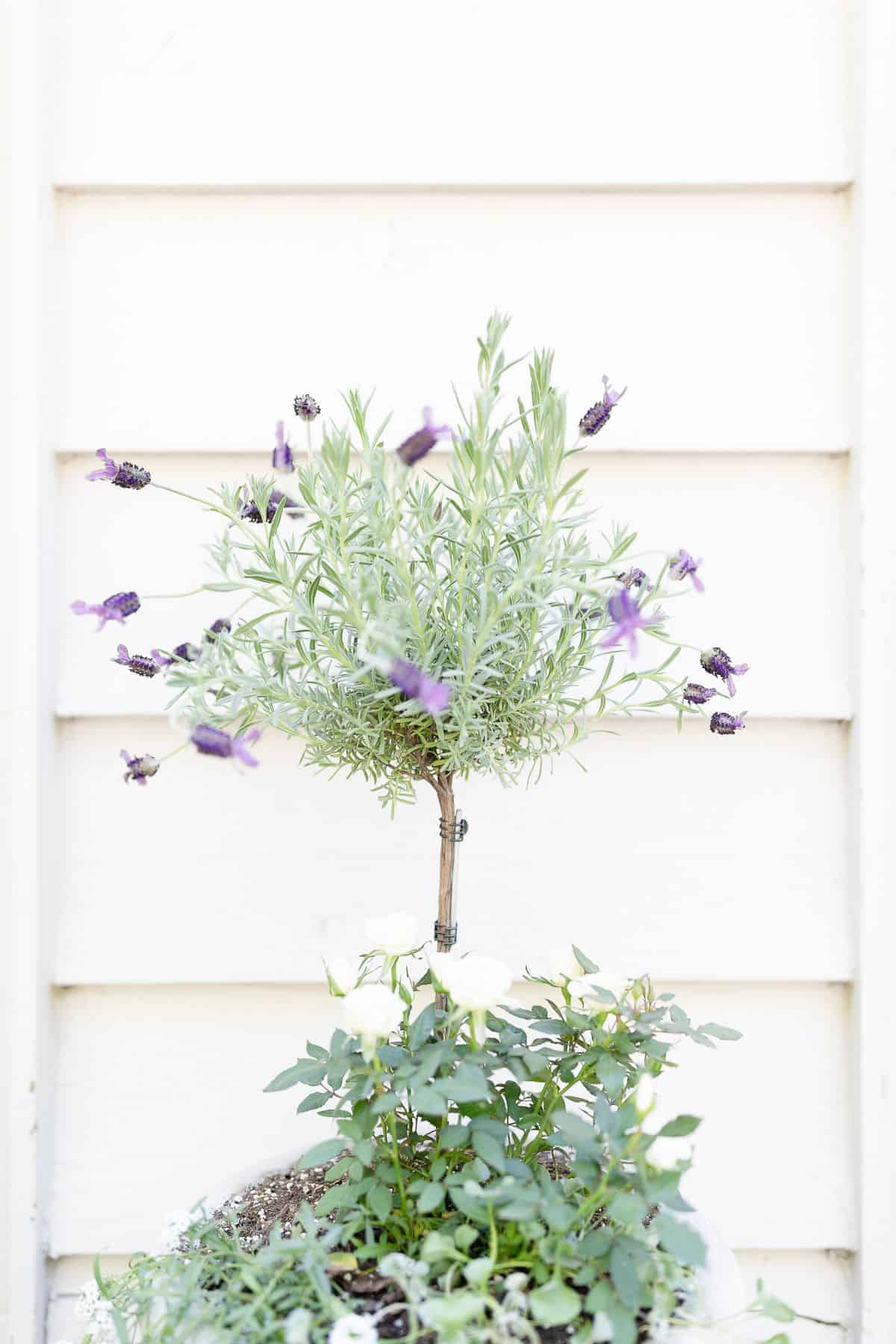
How to Grow Indoors
Lavandula Stoechas’ favorite place to live is outdoors with the sun shining in abundance on it. However, it can thrive indoors as well – what an amazing plant!
Choose a pot that is just a couple of inches larger than your lavender plant. This will help the soil to dry completely. For an added good measure, consider a terra cotta pot that will absorb water from the soil.
Fill with potting soil mixed with a little sand for optimum absorption. Water completely right after planting, but then wait for the soil to dry before watering again. This could be as infrequently as every two weeks.
You probably don’t want your lavender to grow as large as it does outside. So you’ll need to prune and shape it to the size you want it. Do this with sharp shears during the growing season of spring to fall.
Place your lavender in a sunny spot, but out of the way of heating vents. Rotate plant every time you water so all of the lavender gets to enjoy the effects of the sun.
Tips and Facts
- French lavender produces the best fragrance and oils when it is in hot sun and dry, poor soil!
- Clip old woody stalks (the ones that don’t get new growth) down at the base to open the middle of the plant to let air and sun circulate through the plant.
- When you prune and shape, make sure you don’t cut live stems below the lowest leaves. That may make it so the plant doesn’t produce new stems.
- Don’t water outdoor lavender during the winter. It isn’t growing and won’t absorb water, which could lead to root rot.
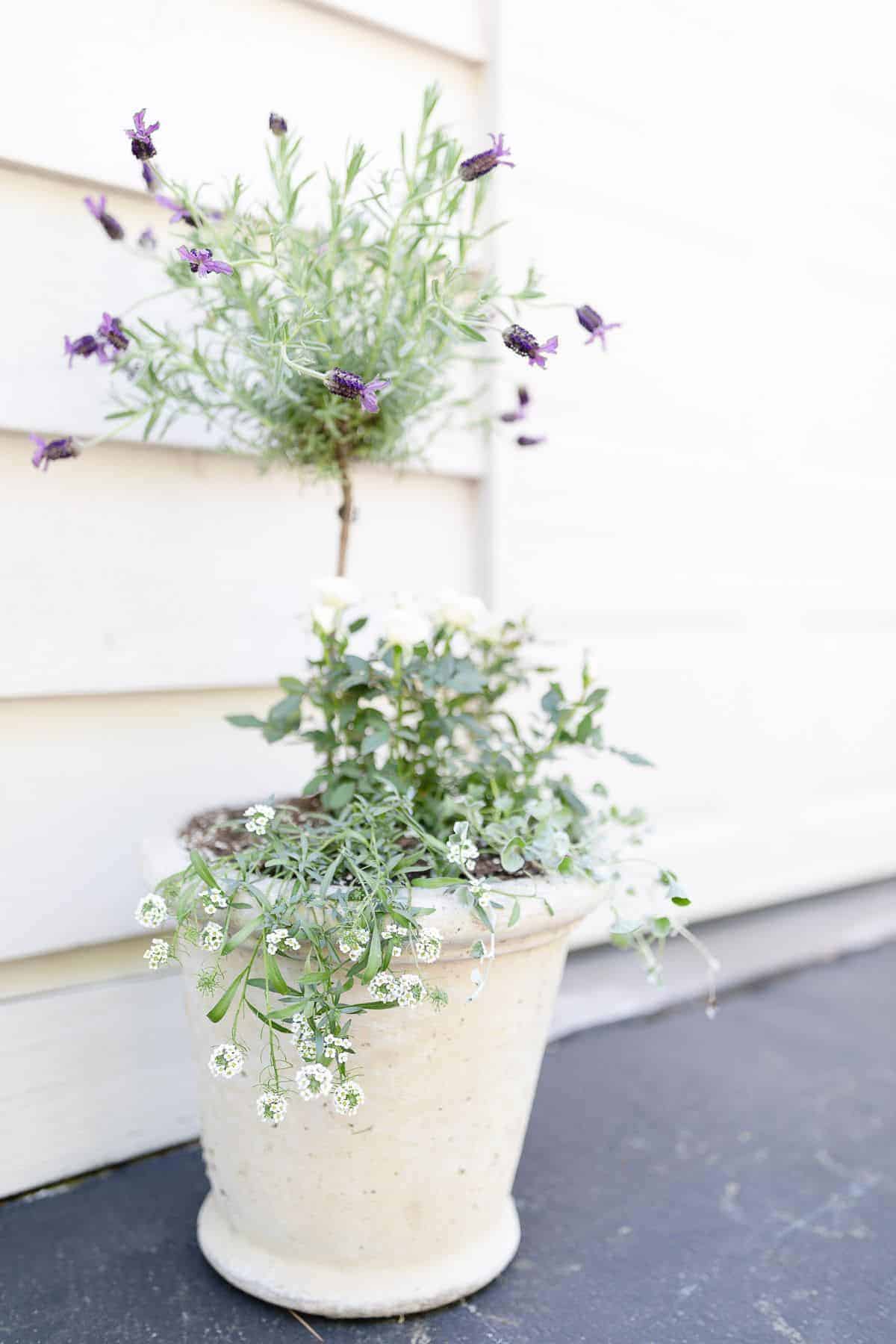
How to Harvest and Use French Lavender
French lavender can be cut and displayed in a vase or dried for long-term use.
Either way, choose the the blooms that you want to snip off and cut the stem just above a junction where new growth – buds, leaves, or stems – has begun. This will allow the plant to keep making new growth from that point. If you want longer stems, trim down lower, but don’t trim below the lowest junction or no new growth will occur on that stem.
For immediate use, place in a small bud vase with water and enjoy on a table, counter, or dresser. They look so sweet, simple and fresh!
For drying, tie a bundle together and hang upside down for a couple of weeks. You may as well use the lavender while you’re drying it, so hang it as a garland in your home. Fresh lavender drying is such a charming look!
Once dry, scrape off the buds, flowers, and leaves. Store in a container and use in homemade bath products and potpourri. I love making lavender lemon sugar scrub and lavender mint softening bath soak.
Frequently Asked Questions
French lavender has a delightful fragrance and is used in bath products, but not as much in cooking. Its scent has a bit more pine to it and doesn’t work as well in cooking.
Definitely prune all dead blooms at the end of the season. You can also deadhead individual blooms as they die off earlier in the season.
